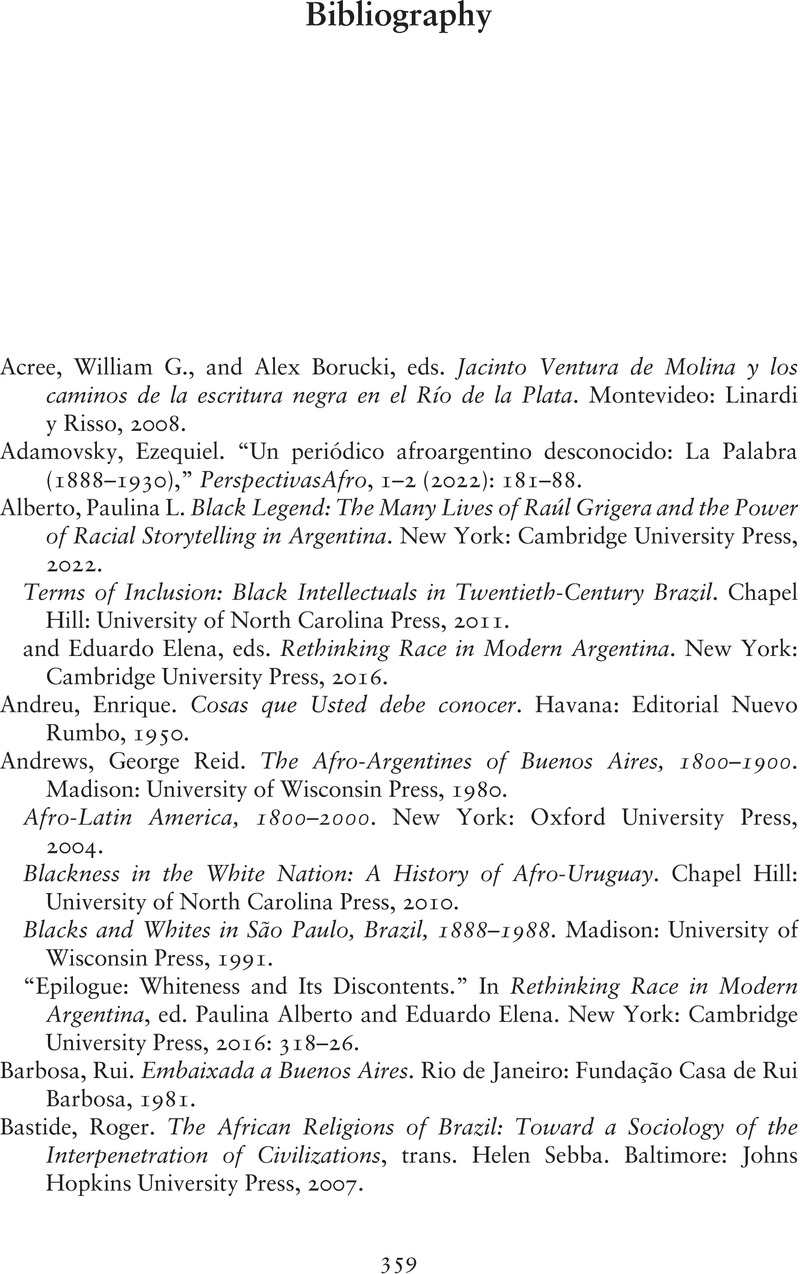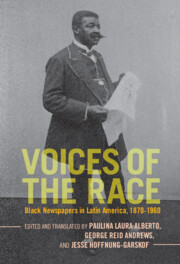Book contents
- Voices of the Race
- Afro-Latin America
- Voices of the Race
- Copyright page
- Dedication
- Contents
- Figures
- Acknowledgments
- A Note on the Text
- Introduction
- Chapter 1 Politics and Citizenship
- Chapter 2 Racism and Anti-Racism
- Chapter 3 Family, Education, and Uplift
- Chapter 4 Community Life
- Chapter 5 Women
- Chapter 6 Africa and African Culture
- Chapter 7 Diaspora and Black Internationalism
- Chapter 8 Arts and Literature
- Appendix Black Periodicals in Argentina, Brazil, Cuba, and Uruguay, 1856–1960
- Glossary
- Bibliography
- Index
- References
Bibliography
Published online by Cambridge University Press: 25 August 2022
- Voices of the Race
- Afro-Latin America
- Voices of the Race
- Copyright page
- Dedication
- Contents
- Figures
- Acknowledgments
- A Note on the Text
- Introduction
- Chapter 1 Politics and Citizenship
- Chapter 2 Racism and Anti-Racism
- Chapter 3 Family, Education, and Uplift
- Chapter 4 Community Life
- Chapter 5 Women
- Chapter 6 Africa and African Culture
- Chapter 7 Diaspora and Black Internationalism
- Chapter 8 Arts and Literature
- Appendix Black Periodicals in Argentina, Brazil, Cuba, and Uruguay, 1856–1960
- Glossary
- Bibliography
- Index
- References
Summary

- Type
- Chapter
- Information
- Voices of the RaceBlack Newspapers in Latin America, 1870–1960, pp. 359 - 365Publisher: Cambridge University PressPrint publication year: 2022



